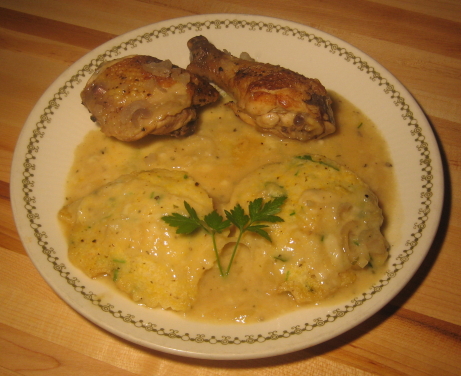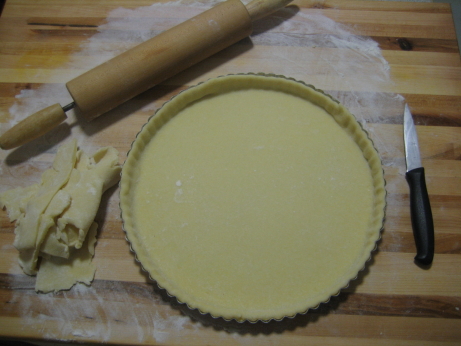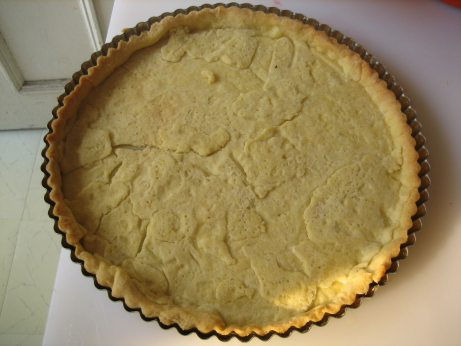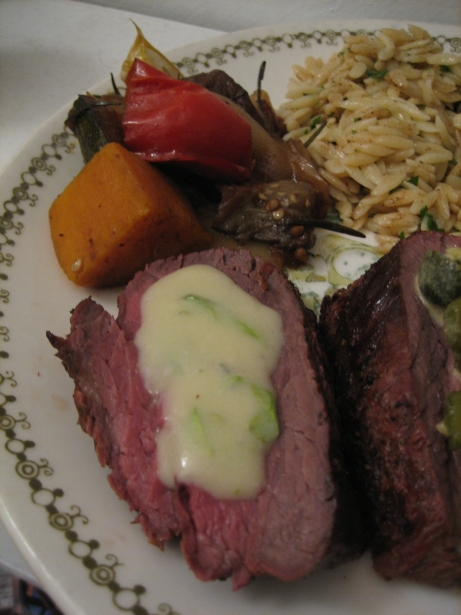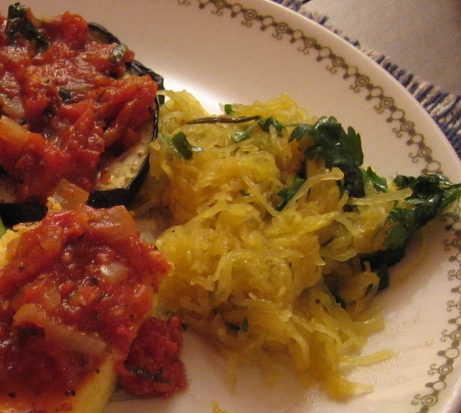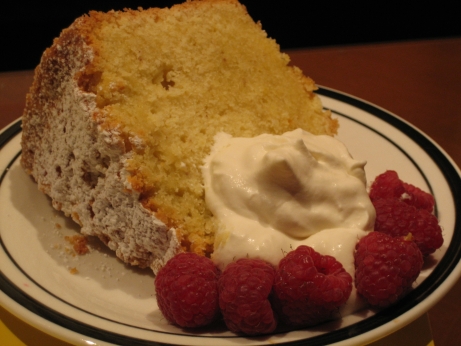I had The Book for a while before I started The Project, and this was one of the recipes I used regularly before The Book and I got serious. Making it again emphasized how much The Project has changed my cooking style. The biggest difference is that I actually read the recipe this time around, and it came out much better.
You start by breaking a chicken down into serving sized pieces, browning them, and then simmering them with white wine and shallots ’till the pieces are cooked through. Meanwhile you put together a dumpling dough with flour, cornmeal, baking powder, baking soda, salt, pepper, butter, chives, parsley, and buttermilk. The chicken is moved to the oven, and the juices left in the skillet are fortified with stock, cream, salt, and pepper. Once this gravy is simmering the dumplings are gently dropped in and allowed to cook for about 15 minutes, then it’s time to eat.
This time around the cooking went well, there wasn’t anything too tricky about it. In previous attempts I’ve managed to really mess things up. The biggest lesson I learned is that the cooking vessel the recipe calls for really is important. In the recipe all of this happens in a deep 12 inch heavy skillet, I don’t have one of those (but if Santa got my letter…), so I used to make it in a 5 quart pot. It seemed like a pretty decent substitution at the time, but I was wrong. Getting the dumplings right depends on the depth of liquid they’re simmered in, too deep and they disintegrate, or raft together into one super-dumpling. This time I used a 10 quart oval dutch oven, which has a similar surface area to a 12 inch skillet, and things worked out. The other lesson I’ve learned is the difference between a simmer and boil. Previously I had my gravy boiling away, and the bubbles tore my dumplings to shreds, a gentle simmer with just the occasional bubble reaching the surface is the way to go. I’m kind of amazed that I made this recipe about five times trying to get it right, and I didn’t pick up on what I was doing wrong.
My previous attempts also fell prey to my undiagnosed culinary dyslexia.I constantly mix up shallots and scallions, I have the hardest time keeping them straight. They’re very different, but it’s a coin toss as to which vegetable I’ll imaging when I hear one of those words. I’m embarrassed to say that I have the same problem with elevators and escalators, weird eh? Long simmered scallions turn kind of yellow and gross, I wouldn’t recommend the substitution. Some practice with The Book has made me sensitive to my neurological condition, so now I double check that my shopping list corresponds to the ingredient list.
My standards for what constitutes a successful recipe have also changed over the course of The Project. In the pre-Project days this came out reasonably well a couple of times, and I was quite impressed by it. I still love the dumplings, and I’d be happy to make them again and again, but the chicken is lacking, and the whole dish is bland. I’ve ranted about chicken skin and wet cooking methods several times, and it was just as unappealing here as in every other dish. The chicken is poached in white wine and shallots, which is fine, but the addition of another herb would be nice, maybe thyme, rosemary, or tarragon. The chicken gives up flavour and interest for the sake of the dumplings, and it’s almost a fair trade. The dumplings have an excellent texture and flavour, they pull in loads of chicken flavour, and have a wonderful buttermilk tang. They’re absolutely the highlight of the dish. I’d rather skip the whole chicken making part of this dish, and just make the dumplings in a stock based gravy. The chicken would be better served by being simply grilled, then served along with the dumplings. Doing something about the beige on beige colour pallet would be nice too.
Maybe I’m being a bit unfair. This dish is a Southern classic, but I have no clue what it’s supposed to taste like. I don’t have any reference point, so I’m probably trying to turn this dish into something it was never meant to be. Using a chicken like this allows a little bit of meat to be stretched into a hearty meal, so there are perfectly good reasons for recipes like this to have developed. And, Its blandly fatty simplicity is what comfort food is all about, but it’s not really my thing these days.
Pre-Project me liked this dish because the dumplings are awesome, but also because it’s essentially a one pot dish, it’s quite inexpensive, not too hard, and it makes good leftovers. Present day me doesn’t mind working a little harder, spending a little more, or using a few more dishes (much to my dining companion’s chagrin) for a better dish. I agree with my former self about the dumplings though.
